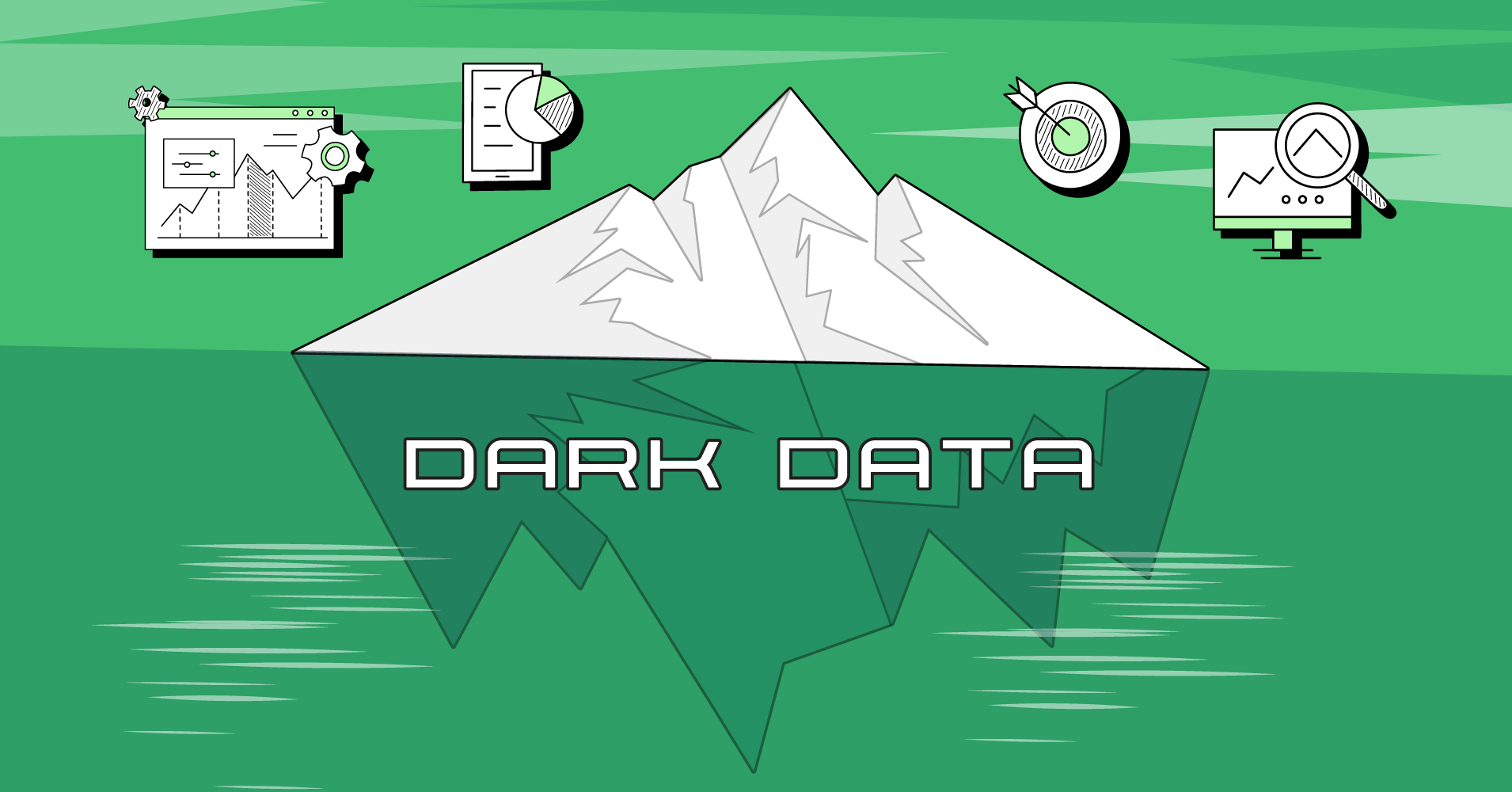
How to Leverage Dark Data for Customer Support
By Uttam Kumar Dash
December 20, 2022
Last Modified: November 13, 2025
If you’re looking for ways to take your customer support to the next level, Look no further! Today, we’ll reveal the untapped potential of dark data and how it can revolutionize the way you support your customers.
You may be wondering, what is dark data? It’s essentially all the data that’s collected but never analyzed or used. Sounds like a waste, right? Wrong!
This overlooked treasure trove of information holds the key to understanding your customers’ needs and pain points and can help you provide personalized, effective support.
But don’t just take our word for it. We’ll also provide examples, tools, and actionable steps for leveraging dark data for customer support in your own business. Trust us; your customers will thank you for it.
So, are you ready to unlock the power of dark data and boost your customer support strategy? Let’s get started!
What is dark data?
As a business owner, you know the importance of gathering and analyzing data to make informed decisions. But have you ever stopped to consider the vast amount of data that goes unused?
This is what we call dark data – the untapped gold mine of information that holds the key to improving customer support, enhancing customer experience, and driving business growth.
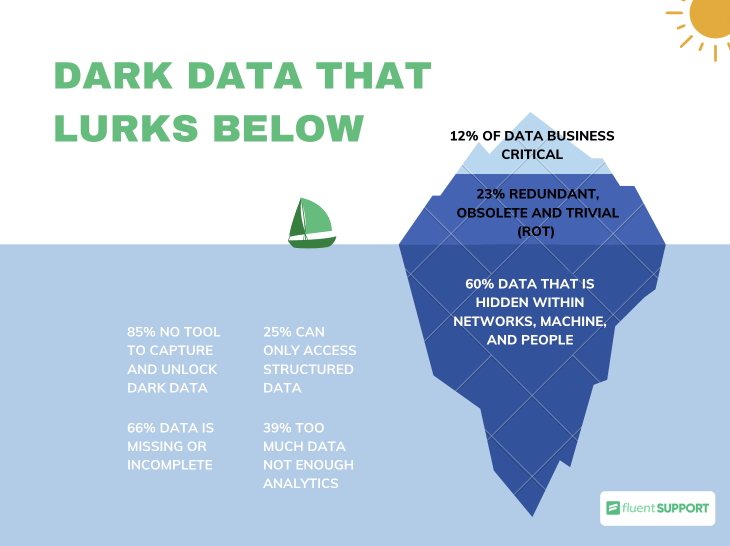
A recent study showed that 73% of collected data goes unused. Can you believe it? That’s a lot of missed opportunities. But it’s not too late to change that. You can gain valuable insights into your customers’ needs, preferences, and pain points by leveraging dark data.
This can help you provide more personalized and effective support, leading to improved customer satisfaction and loyalty.
But it’s not just customer support that can benefit from dark data. This valuable resource can also be used to optimize marketing efforts, improve supply chain management, and optimize product development. The possibilities are endless.
Where does dark data come from?
You might wonder where this mysterious dark data comes from. The explanation is that it originates from various sources. Log files, which record activity on a company’s website or app, are one typical source.
Because of their enormous bulk and complexity, these log files are frequently disregarded even though they might offer insightful information about client behavior.
customer behavior and feedback are other forms of dark data. These can offer insightful information about client requirements and preferences, but it’s common for organizations to gather this information without ever analyzing it.
Dark data might even come from social media. Consider all the shares, likes, and comments that occur on websites like Facebook and Instagram. Businesses can enhance their marketing initiatives and gain a better understanding of their clients by evaluating this data.
However, the idea of dark data is not anything new. Actually, scientists from the University of California, Berkeley were the first who invented the phrase in the 1990s.
And, since then, there have been enormous increases in data collection, creating more and more potential for corporations to use dark data.
How to utilize dark data for customer support?
So, how do you get started with Dark Data (the gold mine for improving customer support)?
The process may require some digging and the help of specialized tools (we’ll tell you about those tools in a bit, hang on!). Here are a few steps that you can follow to utilize those Dark Data for customer support.
1. Identify sources of dark data
Finding the information’s origins is the first step in utilizing dark data. As we’ve already discussed, some typical sources are social media data, consumer reviews, polls, and log files.
Review the data that your company is gathering but not using, and think about how it might be useful for enhancing customer service.
2. Establish a plan for analyzing and using the data
Having determined the sources of the dark data, the following stage is to create a strategy for its analysis and utilization. This can entail bringing in some specialized equipment or recruiting a group of people with knowledge of data processing.
Moreover, it’s critical to have a clear understanding of the goals you have for the data. For example, recognizing trends in customer behavior development, creating a customer segmentation model, establishing a customer onboarding process, and identifying pain spots that require attention.
3. Analyze the data and extract insights
Now that you have a fixed strategy, it’s time to begin work with data analysis and extraction of insights. Searching for patterns or trends may include going through a lot of data.
Besides, it’s important to consider the context of the data collection and how you can apply that to your company.
4. Implement changes based on the insights
Now, it’s time to put the dark data insights into practice after you’ve retrieved them. This can involve modifying your customer service strategy, to offer more assistance and support or deal with common problem issues.
It’s crucial to monitor the effects of these adjustments and keep studying the data to find more room for growth.
You may effectively use dark data to enhance your customer service and experience by adhering to these measures. Moreover, with an increase in sales and money, it will also boost customer satisfaction and loyalty.
Some popular tools for dark data mining
You can utilize a variety of tools for dark data mining in customer support or customer care. Some possibilities are:
1. Text analytics tools
These tools enable you to extract insights from and spot trends in vast amounts of text data from surveys and customer comments. Lexalytics, Adobe Analytics, and IBM Watson are a few examples.
2. Social media monitoring tools
You can collect and analyze social media data such as comments, likes, and shares with the help of these tools. Also, you can learn more about the customer behavior & their preferences. For example – WP Social Ninja, Hootsuite, Sprout Social, Brand24, etc.
3. Data visualization tools
It is simpler to extract insights and spot patterns thanks to these tools’ assistance in visualizing and communicating data in a straightforward and understandable way. For example – Tableau, Google Charts, and D3.js.
4. Customer relationship management (CRM) systems
Now, many CRM systems include impressive capabilities of data analytics for analyzing customer data and extracting insights from there.
Popular examples of CRM systems – FluentCRM, Salesforce, Zoho CRM, Microsoft Dynamics, etc.
5. Help desk plugins & software
You can monitor customer contacts, examine customer data, utilize machine learning techniques, evaluate customer feedback, and reviews using a support desk plugin or software.
You can learn more about client preferences and behaviors. Spot typical difficulties, problems, and enhance the customer experience by doing this. Examples – Desk.com, Salesforce Service Cloud, Fluent Support, and others.
It is important to keep in mind, that these are just a few of the vast approaches for dark data mining in customer service or customer support that are available now in the industry. However, the right tool will depend on the particular requirements and objectives of your business.
Machine learning AI for utilizing dark data
Suppose, to mine dark data; you’ve decided to turn to machine learning AI.
Using various natural language processing techniques, the AI will be able to extract useful information from these unstructured data sources. Also, this will identify trends and patterns that may be impacting the customer experience.
For example, the AI may find that a large number of customers are experiencing difficulties with a certain product or that there are recurring issues with a particular part of the customer journey.
Armed with this information, you can take steps to address these issues and improve the overall customer experience.
In addition to analyzing dark data, you can also use machine learning AI to predict customer behavior and identify potential issues before they arise.
This proactive approach can help your customer support team to address problems before they become serious, resulting in a better experience for your customers.
Machine learning AI can analyze customer interactions and identify areas where the customer experience can be improved.
By streamlining processes and providing more detailed information, you can make the customer journey smoother and more enjoyable for your customers.
Dark Data: The gold mine for customer support
As the old saying goes, “Knowledge is power.” Therefore, when it comes to customer support, having a deep understanding of your customers and their needs can make all the difference in providing exceptional service. That’s where dark data comes in.
So, if you want to take your customer support to the next level, don’t let your dark data gold mine go to waste. Start mining for insights, utilizes them, and watch your business thrive.
Thank you for reading this blog and for your interest in learning. We hope you found it informative and helpful. And wish you the best in your efforts.
Start off with a powerful ticketing system that delivers smooth collaboration right out of the box.





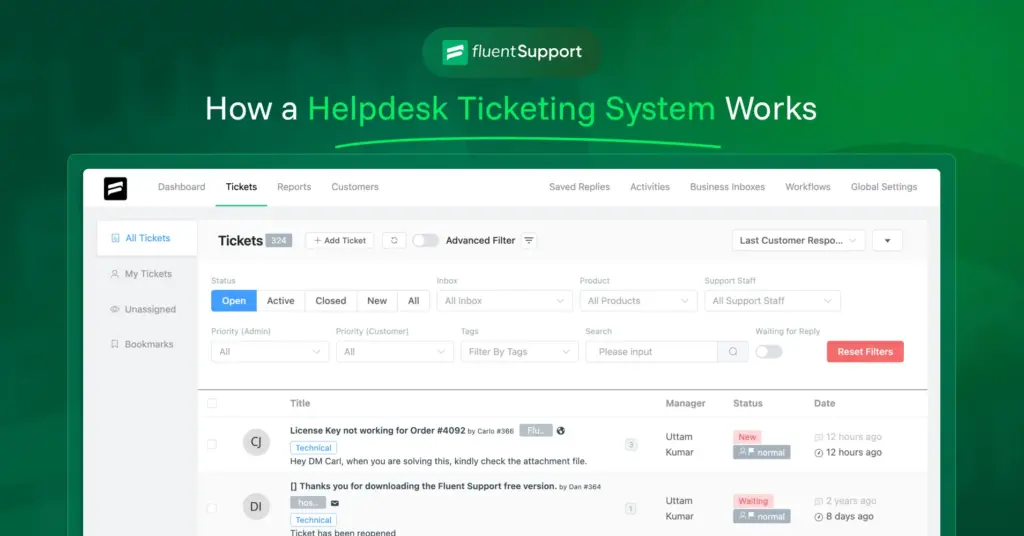
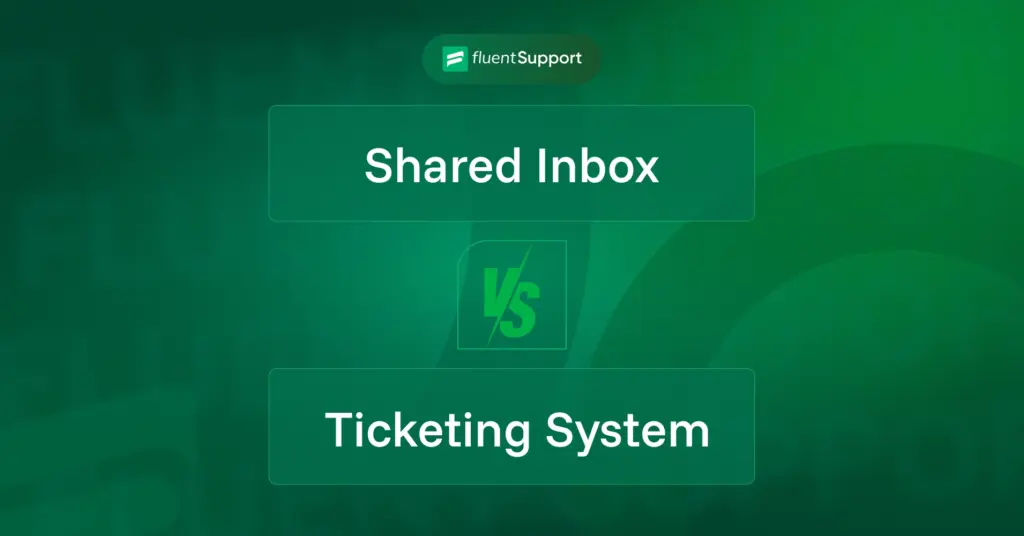
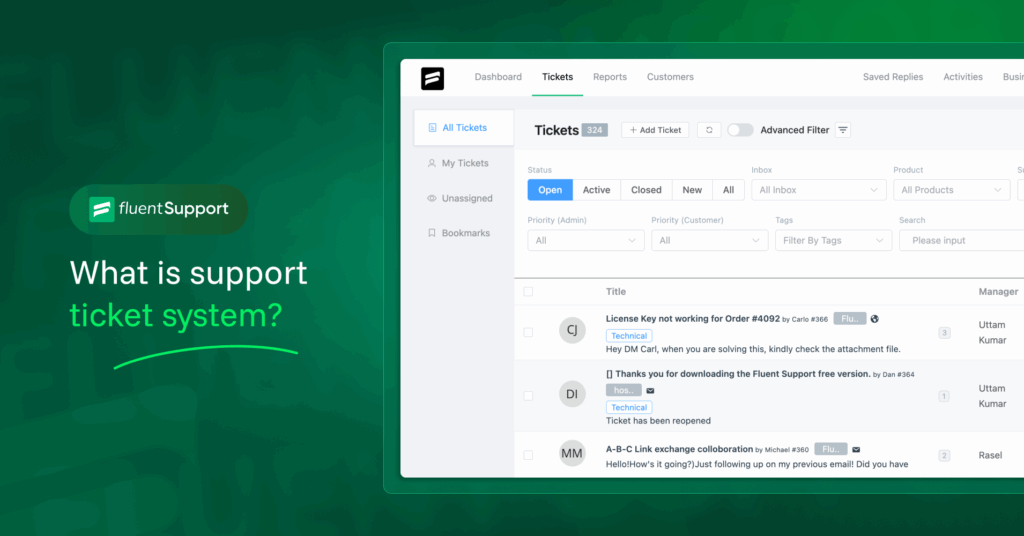
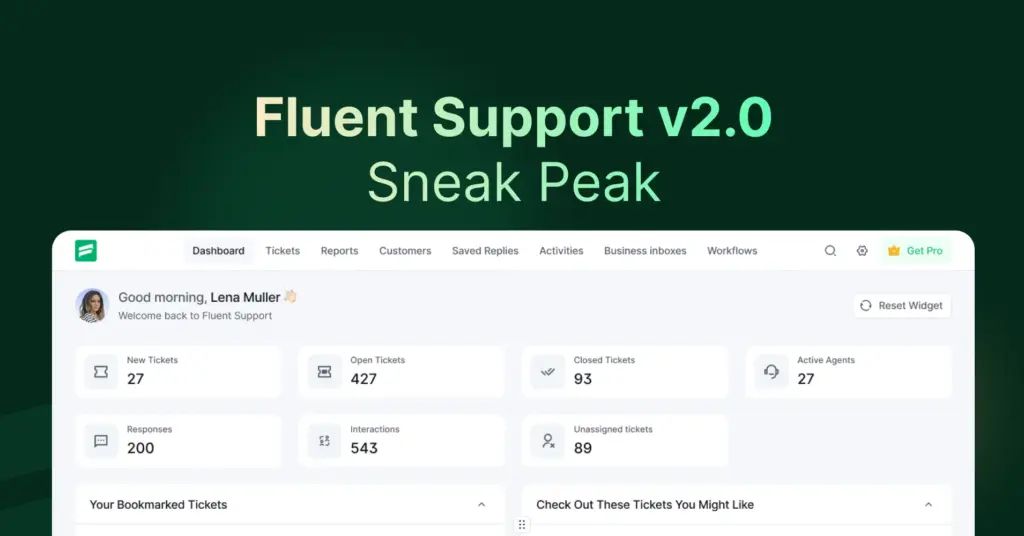



Leave a Reply